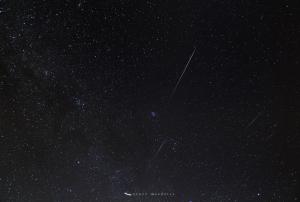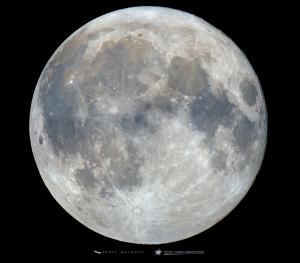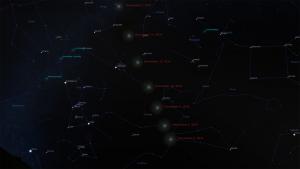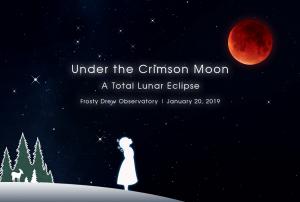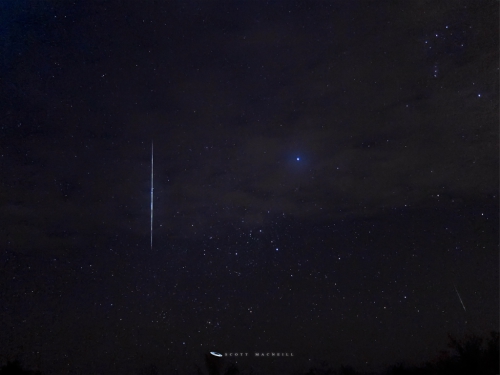
Stargazing Nights
- Where:
- Frosty Drew Observatory
- When:
- Friday December 7, 2018 at 7:00 p.m
- Cost:
- $5 Suggested Donation per person 5 years and older
Frosty Drew Observatory Stargazing Nights. Friday, December 7, 2018 7:00 p.m.
Tonight is Stargazing Night at Frosty Drew Observatory, and forecasts are setting us up for an absolutely amazing night! We can expect clear skies practically all night long, and it just happens to be the New Moon today. Add in that we have a potentially naked eye visible comet, and early Geminid meteors; and tonight is almost too good to be true. The only downside we see, is that it will be cold, with temps dropping through the 20’s. Though that is a small price to pay for awesomeness!
We will open the Observatory and Sky Theatre at 7:00 p.m. tonight. In the Observatory, telescopes will focus on Mars, Uranus, the Orion Nebula, and dozens of deep sky objects visible tonight. In the Observatory courtyard a telescope with a camera will be setup on Comet 46P/Wirtanen, which will project live views of the comet onto a screen outside, as well as inside the Sky Theatre. We may also setup a telescope outside offering views of the comet, the Andromeda Galaxy, the Triangulum Galaxy, and more. Inside the Sky Theatre, temps will be warm, offering breaks from the winter-like temps tonight. On screen we will show live views of Comet 46P. We will stay open until 11:00 p.m., possibly much later.
Overall, tonight is absolutely the night to make the long drive! We are expecting clear skies, a New Moon, a near naked eye comet, and thousands of stars tonight. The Geminid Meteor Shower kicked in this past Tuesday, December 4th, and meteor rates are increasing. Super dark, cloud free skies make for excellent meteor viewing conditions, and that describes tonight. It will be cold, colder than it has been, and not dressing for it / respecting the elements will make tonight a rather terrible experience. So read our primer on how to dress for winter nights, and make it a fabulous night by dressing properly. Note the Sky Theatre will be warm and will serve as a warm up hut for those needing a break from the cold. So gear up - hats, gloves, wind breaking jacket, boots; all of which are required tonight; and set out for the darkest skies in the area for an amazing night with the cosmos at Frosty Drew Observatory, and set your inner geek loose!
------------------------
Weekly Happenings
Scott MacNeill
Starting this past Tuesday, December 4, 2018, the annual Geminid Meteor Shower is underway. Certainly one of the best meteor spectaculars of the year (if not the best), the Geminid Meteor Shower peak brings an increase in regular meteor activity upwards of 120 meteors per hour to the sky, and is happening this coming Thursday, December 13, 2018.
The Geminid shower gets its name from the constellation that meteors will appear to radiate from, in this case the constellation Gemini. What makes this shower so awesome, aside form the high rate of meteor activity, is that the shower happens about a week before the Winter Solstice, leaving us in the longest period of nighttime for the year. The radiant point of the shower, the bright Gemini star, Castor, rises well above the eastern horizon by 9:00 p.m., will pass overhead, and into the western sky before sunrise. So we have one of the longest night’s of the year, with one of the best meteor displays of the year. Hot! The Moon plays an important role in how amazing meteor viewing will be, with no Moon being the best possible conditions. This year we have a 35% waxing crescent Moon at sunset, setting around 10:08 p.m., which puts the best part of the shower under moonless skies. All we need now is for weather to follow suite, and we could have another night like the 2012 Geminids, where hundreds of visitors were treated to hundreds of shooting stars all night long. Forecasts at this time are pending, though we could score. Now is the time to get your plans in order, and keep your fingers crossed for a fabulous night this coming Thursday.
To view the Geminid shower, set out to a spot with a wide open view of the sky, free of light pollution; like Frosty Drew Observatory, which will be open all night December 13-14, weather permitting, to celebrate the shower. Lay on your back with your feet towards the southeast, so you are looking towards the zenith (top of the sky). Meteors will become frequent after 9:00 p.m., with times after 10:00 p.m. being optimal. For more information about the Geminid Meteor Shower, check out our article. For more information about our Geminid Meteor Shower peak night event, visit our Geminid event page.
Later today, December 8, 2018 (Chinese Time), China will launch another robotic mission to the Moon. This mission, named Chang’e 4, will be the first ever mission to touch down on the far side of Earth’s Moon. This is the side that we do not see from Earth, due to the Moon being tidally locked with Earth (the Moon’s axial rotation has the same period as the Moon’s orbital period, so we always see the same side). Goals of the Chang’e 4 mission will be to touch down inside the 104-mile-wide Von Karman crater, which is inside Aitken basin - the largest known impact crater in the Solar System, survey the mineral composition of the region, and deploy a small greenhouse inside the lander that will test the potential for growing potatoes and thale-cress in a low gravity environment with no magnetic field. Expect the landing to occur shortly after New Year’s. Go China
Comet 46P/Wirtanen (46P), certainly the comet of the year at this point, has been on track with expectations and is brightening nicely. Though unconfirmed at this time, the comet could be naked eye visible at Frosty Drew Observatory (which we will confirm tonight). Comet 46P, a short period comet with an orbital period of 5.4 years, is expected to reach perihelion (its closest approach to the Sun) on December 12, 2018 at a distance of 98,417,909 miles distant, followed by a super close approach to Earth on December 16, 2018 at a distance of 6,320,994 miles distant (sorry doomsayers, no impact threat here). The comet is placed fabulously in our nighttime sky for viewing with progressively better positioning happening over the next couple weeks. Check out this finder chart we put together that notes Comet 46P/Wirtanen’s placement over the next couple weeks.
Now is the time to be out looking for comet 46P, with the New Moon happening today. Over the next week, many fabulous viewing opportunities will present themselves, with what looks like clear skies for most of the week in Southern New England. When viewing the comet, bring binoculars. The comet’s atmosphere (coma) is quite large and as big, if not bigger than, the size of the Full Moon in the sky. It will appear as a large blurry spot or small cloud in the sky. A camera will capture the comet’s greenish blue hue. Using a telescope to view the comet will be difficult due to how large the comet is. If doing so, be sure to use extremely low magnification, like 16x-28x. Otherwise the comet will likely fill up your field of view. Frosty Drew Observatory will have a dedicated telescope on Comet 46P over the next month or so during our Stargazing Nights, offering up views of Comet 46P/Wirtanen. If you have dark skies, get out and catch a view of what may be the first naked eye visible comet in quite a few years for New England, while the skies are clear.
Save the Date:
On Sunday, January 20, 2019, A Total Lunar Eclipse is coming to the skies over the United States. For all of us in New England, this will be a remarkable event! Frosty Drew Observatory will be open on Sunday, January 20th starting at 8:30 p.m. and continuing until 3:00 a.m. Monday morning. That Monday (January 21, 2019) is Martin Luther King Jr. Day, which schools and many places of business observe, making for an accessible night for many to catch a view of the eclipse. Check out our event page for information about the eclipse and our event, and make plans now to be out at Frosty Drew Observatory for the first Total Lunar Eclipse over New England since autumn 2015.
-Scott

